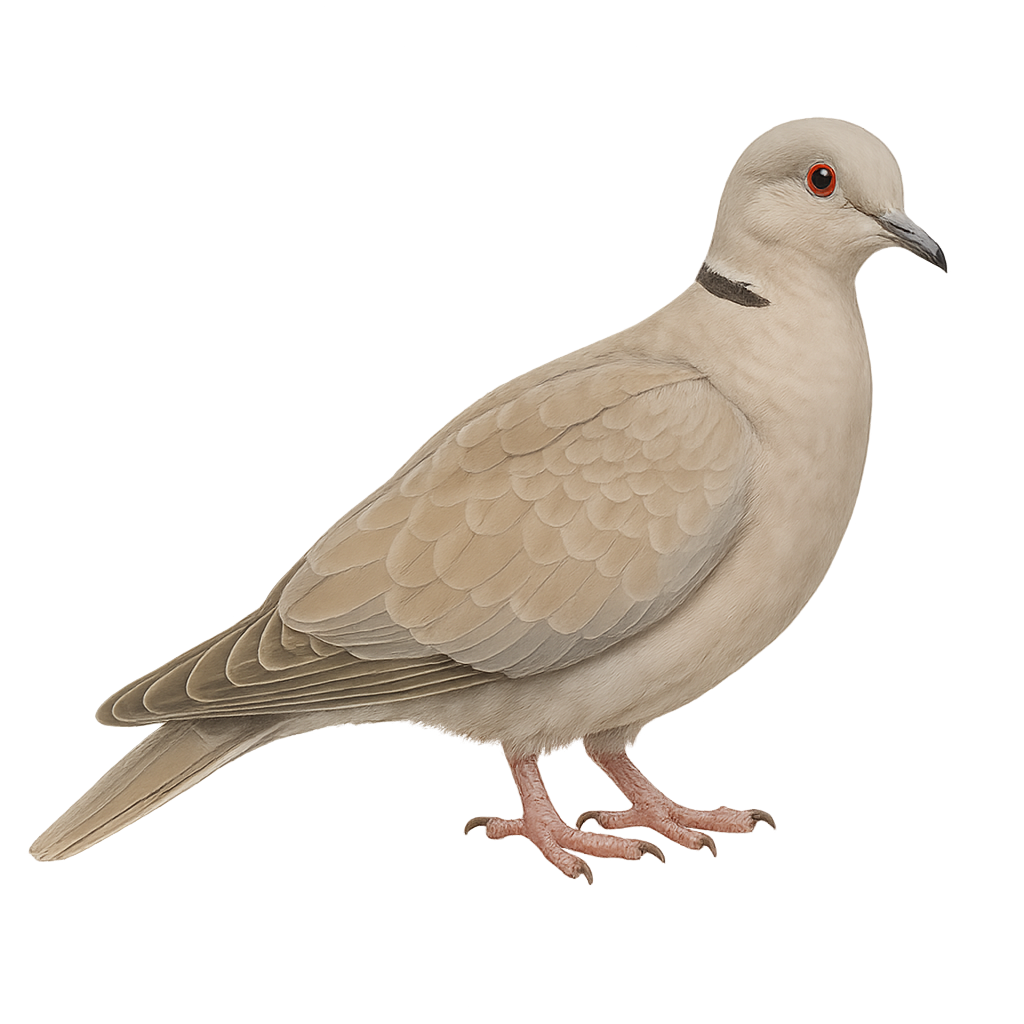Your wildlife photography guide.
Explore the eurasian collared dove in detail, study its behavior, prepare your shots.
Where to observe and photograph the eurasian collared dove in the wild
Learn where and when to spot the eurasian collared dove in the wild, how to identify the species based on distinctive features, and what natural environments it inhabits. The WildlifePhotographer app offers tailored photography tips that reflect the eurasian collared dove’s behavior, helping you capture better wildlife images. Explore the full species profile for key information including description, habitat, active periods, and approach techniques.
Eurasian Collared Dove
Scientific name: Streptopelia decaocto

IUCN Status: Least Concern
Family: COLUMBIDAE
Group: Birds
Sensitivity to human approach: Suspicious
Minimum approach distance: 30 m
Courtship display: March to August
Incubation: 14-16 jours
Hatchings: March to September
Habitat:
Urban, suburban, and agricultural areas, parks, gardens, cemeteries, avenues, and isolated trees
Activity period :
Primarily active during the day, with peak activity in the morning and late afternoon.
Identification and description:
The Eurasian Collared Dove is a medium-sized dove, measuring about 32 cm in length with a wingspan of 47 to 55 cm. Its plumage is grayish-beige with pinkish hues on the head and chest. It is characterized by a black half-collar edged with white on the back of its neck. It emits a soft cooing sound, often described as "hoo-hoo-hoo-hoo." Originally from South Asia, it has rapidly expanded into Europe, North Africa, and the Americas. It frequents urban, suburban, and agricultural areas, feeding primarily on seeds, berries, and buds. Breeding can occur year-round, with an average of three to four broods per year. The young leave the nest about 19 days after hatching. The species is listed as Least Concern by the IUCN.
Recommended lens:
400 mm – adjust based on distance, desired framing (portrait or habitat), and approach conditions.
Photography tips:
Use a telephoto lens to photograph the Eurasian Collared Dove, especially when feeding on the ground or perching discreetly in vegetation. Favor soft morning or evening light to capture the details of its plumage. Be patient and discreet to observe its natural behaviors.
From knowledge to field practice
A species profile helps you understand an animal. In the field, the challenge is often different. Remembering your own observations.
The WildlifePhotographer app allows you to:
• record your personal observations
• note locations, dates, and behaviors
• revisit your field references over time
• build a private and long-term field logbook
The app does not provide observation locations.
It helps you organize what you actually observe, with respect for wildlife.

